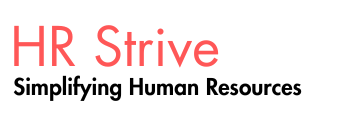Selecting the appropriate communication medium is essential for delivering messages effectively. Each method has its own strengths and limitations, which should be considered based on the context, purpose, and audience.
| Channel | Advantages | Limitations |
|---|---|---|
| In-person or small group | · Enables immediate two-way interaction, both verbal and nonverbal · Ideal for handling complex, emotional, or sensitive topics (e.g., conflict resolution, negotiations) | · Time-consuming · Requires strong listening and interpersonal skills · Risk of miscommunication through body language |
| Phone call | · Allows for real-time dialogue and clarification · More personal than written communication | · No visual feedback cues · Requires focused listening · Competes with distractions |
| Voice mail | · Convenient for leaving brief messages or updates · Saves time compared to live calls | · No confirmation of receipt or understanding · One-way communication only |
| Video conferencing | · Reduces travel and cost · Facilitates remote participation and real-time collaboration · Useful for team meetings, training, and presentations | · Risk of technical problems (e.g., poor connection) · Lacks full in-person interaction cues · May lead to fatigue if overused |
| · Efficient for sharing detailed information · Supports group communication · Provides a written record | · Tone can be misinterpreted · Limited immediate feedback · Easily overlooked or lost in clutter | |
| Instant messaging / Chat | · Quick exchange of short, direct messages · Useful for urgent updates or brief conversations | · Limits depth of communication · Can be disruptive or misread as informal or invasive |
| Social media | · Reaches broad or targeted audiences quickly · Effective for campaigns, updates, or feedback collection (e.g., polls) | · May not reach internal or older audiences effectively · Needs careful vetting due to public visibility |
| Formal written reports | · Presents comprehensive information · Encourages thoughtful review and response · Acts as official documentation | · Time-intensive to prepare · Must meet internal standards or formats · Feedback may be delayed |
| Oral presentations | · Allows live feedback and interaction · Can use multimedia and visuals to enhance impact | · Requires speaker preparation and confidence · Supporting materials take time and effort to prepare |
| Town hall sessions | · Increases leadership transparency · Strengthens employee engagement and shared values · Encourages open communication across levels | · Requires careful logistical planning · Participation may be limited by group size or comfort level |
Additional Communication Planning Considerations
When selecting the method and format for delivering a message, consider the following strategic factors:
-
How will audience feedback be gathered?
Even with mass communication tools like emails or recorded videos, make sure there’s a way for the audience to respond—such as surveys, feedback links, or Q&A opportunities. -
What organizational guidelines apply?
Most organizations have both formal and informal communication standards. These may include approval processes for external messages, preferred formats for internal updates, and mandatory templates (e.g., PowerPoint slides for formal presentations). -
What tone is appropriate?
Choosing the right level of formality is critical. Messages with legal or organizational consequences—such as disciplinary actions—should always be communicated formally, ideally face-to-face or over the phone. Informal messages, like casual invitations or reminders, may be more effectively shared through chat or social channels.

No comments:
Post a Comment